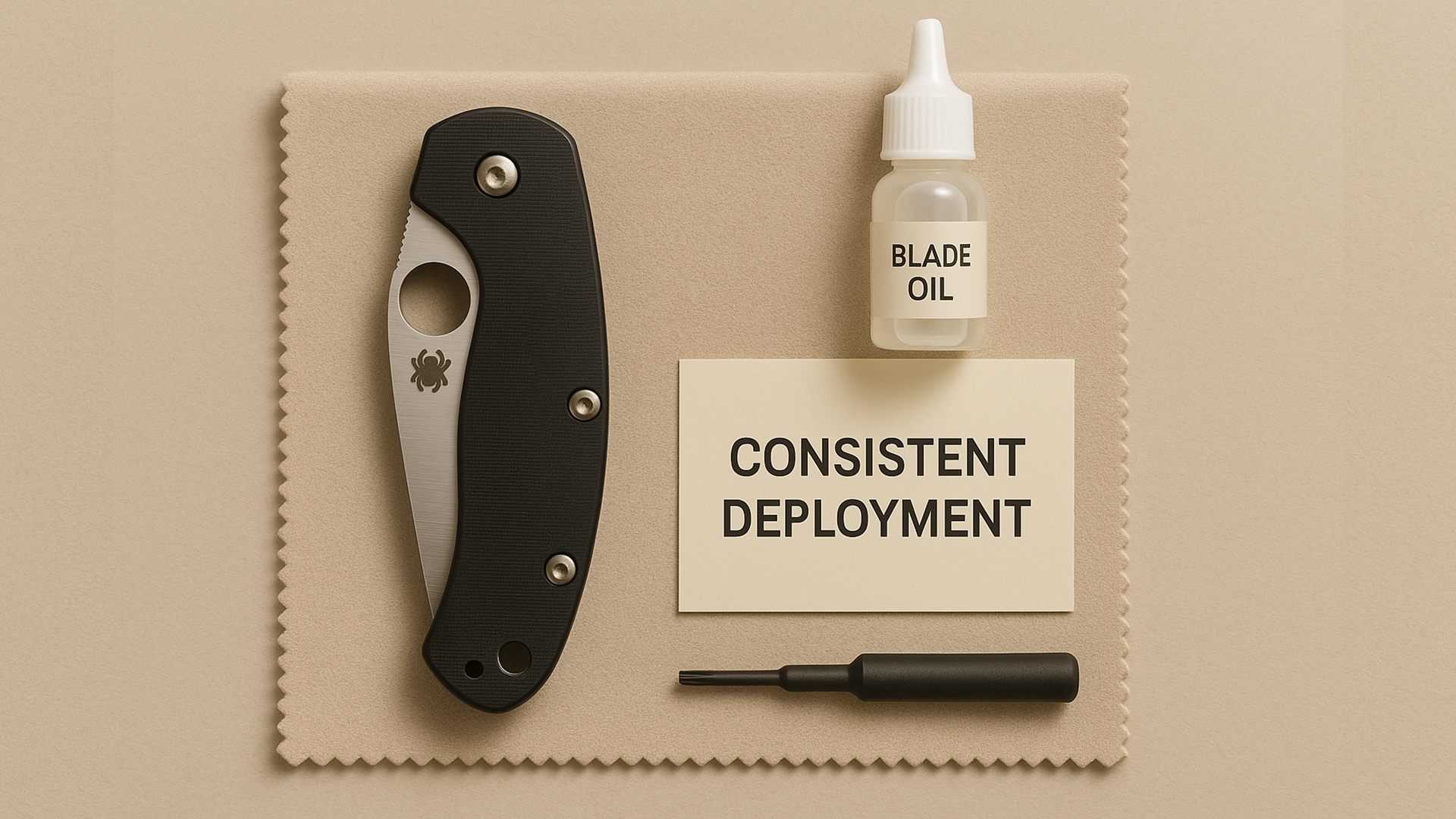How to Restore a Worn-Out Spyderco Detent for a Better Deployment

This is the 49th blog of the Spyderco blog series. You can check the other blogs I wrote from here – https://spydercoparts.com/blogs
Author: Logan M. Fraser
Occupation: Custom Knife Modder & Spyderco Parts Specialist
Location: Calgary, Alberta, Canada
When discussing Spyderco detent restoration, knife enthusiasts know that a worn-out detent can dramatically affect blade deployment. Over time, repeated flicking, grime, or minor misalignments can soften the detent’s hold, making your knife feel sluggish or unreliable. In this post, I’ll walk you through restoring a Spyderco detent without ruining your blade, based on my hands-on experience modding hundreds of Spydercos.
Why a Proper Detent Matters 
The detent is a small but critical part of your knife’s action. It:
Controls Deployment Speed: Ensures the blade snaps out crisply.
Keeps the Blade Secure: Prevents accidental partial openings in pocket.
Improves Safety: A strong detent means the blade stays closed until intended.
A worn detent can make your Spyderco feel loose and unsafe. It can also increase wear on other components if the blade is rattling or opening unintentionally.
Common Causes of Detent Wear 
Heavy Fidget Use: Excessive flicking can smooth the detent ball and track.
Dirt and Corrosion: Debris in the detent track can grind down surfaces.
Poor Lubrication: Dry operation accelerates wear.
Factory Imperfections: Rare, but some detents start weaker than others.
Knowing the cause helps you choose the best restoration method.
Evaluating Your Detent Strength 
Before restoring, check:
Visual Inspection: Open the knife and look for a polished or flattened detent ball.
Feel the Action: Does the blade drop freely when closed? Does it fail to “click” shut?
Compare to a Similar Model: If possible, feel another Spyderco of the same model for reference.
If your detent feels noticeably weaker, it’s time to restore it.
Tools & Materials You’ll Need 
Torx drivers (T6, T8, T10 for Spyderco screws)
Fine diamond file or ceramic rod
Polishing compound
Micro-mesh sandpaper (3000–8000 grit)
Quality lubricant (SpydercoParts.com stocks suitable options)
Replacement detent balls or liners if needed (available here)
Step-by-Step: Restoring a Spyderco Detent 
1. Disassemble Safely
Remove the blade and liners using Torx drivers. Keep track of washers and screws on a magnetic mat to avoid losing small parts.
2. Clean Thoroughly
Use isopropyl alcohol and a microfiber cloth to remove grime from the detent ball and track. Built-up debris can mimic detent wear.
3. Inspect the Detent Ball
If it’s visibly flattened, consider replacing it. SpydercoParts.com offers precision-fit replacements designed for common models.
4. Polish the Track
Wrap micro-mesh sandpaper around a rod and lightly polish the detent track inside the blade. This removes burrs without removing too much steel.
5. Reassemble and Test
Apply a small amount of lubricant to the detent ball and pivot area. Reassemble the knife, ensuring screws are tightened evenly. Test the action: the blade should “click” shut and deploy smoothly.
Pro Tip: Go slow. Over-polishing can make the detent too weak.
When Replacement is Better 
If polishing and cleaning don’t restore crispness, replacing the detent ball or liner is your next step. Using genuine or high-quality parts avoids misalignment or fit issues. Generic parts can create slop in the action or damage the blade track.
Functional vs. Cosmetic Mods 
Restoring a detent isn’t just about performance—it can preserve your knife’s value. Collectors appreciate knives that open and close like new. A sloppy detent can make even a premium Spyderco feel like a budget folder.
Product Tie-In: Recommended Parts 
Detent Balls & Liners: For when cleaning isn’t enough.
High-Quality Lubricants: Keeps the action smooth long-term.
Replacement Washers: Worn washers can also affect detent feel.

My Experience Restoring Detents 
Over the years, I’ve handled everything from lightly worn Delicas to Para 3s with almost no detent left. One memorable fix involved a PM2 whose detent ball had been completely flattened by constant fidget flipping. A quick replacement and careful track polish transformed it back into a crisp, reliable cutter. Restoring detents can breathe new life into a knife that feels past its prime.
Sources & Further Reading 
Spyderco Forums on detent tuning: https://forum.spyderco.com
Knife maintenance basics: https://knifepivotlube.com
These resources provide additional insights and community-tested methods for detent restoration.
Wrapping It Up 
A worn detent doesn’t mean your Spyderco is done for. With careful cleaning, polishing, or part replacement, you can restore a crisp, reliable deployment. The key is patience and using proper, high-quality parts.
This blog is part of my ongoing Spyderco series. Browse the rest here: https://spydercoparts.com/blogs
Got a question about detent restoration? Drop it in the comments—I’ll answer personally. And let me know what Spyderco topic you’d like covered next week: lockbar tension, sharpening tips, or custom scale fitting?


